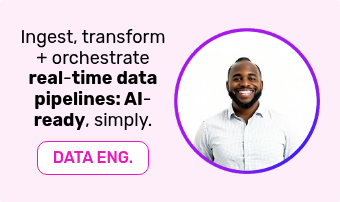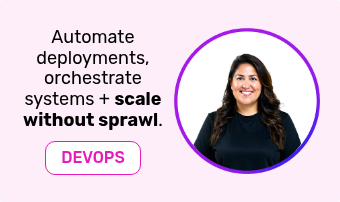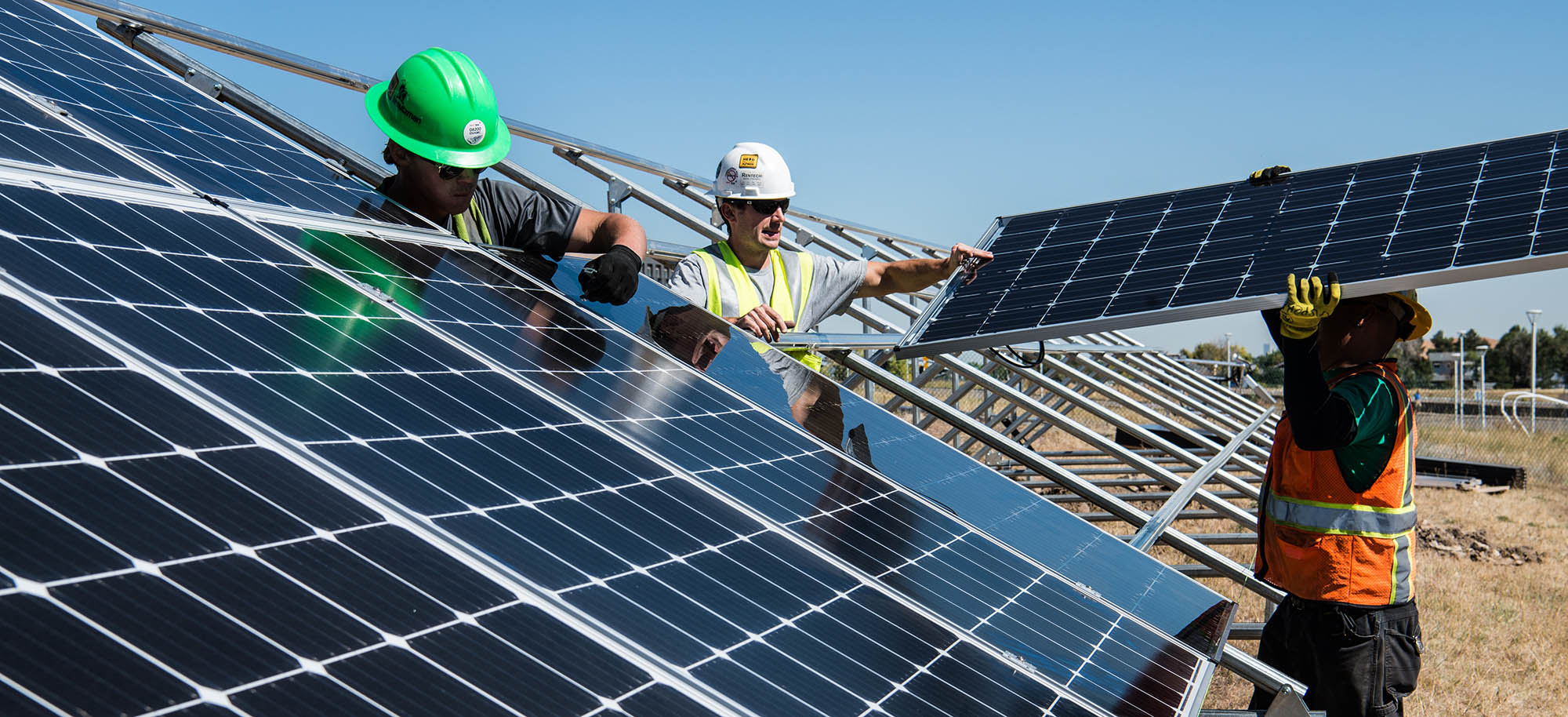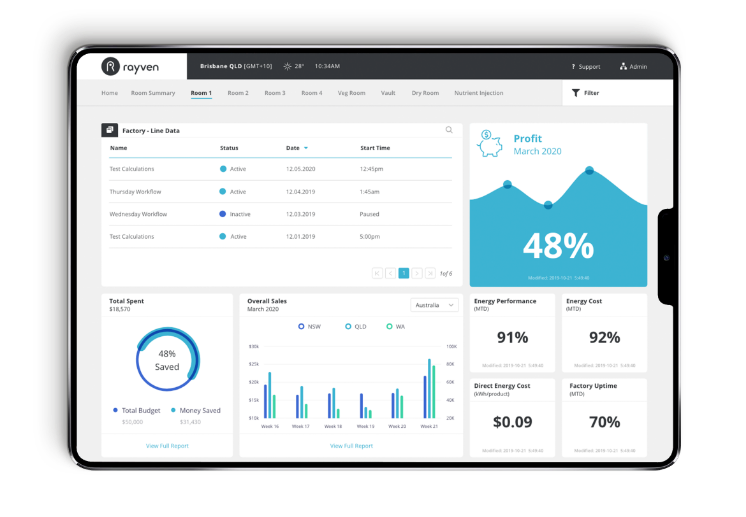Solar Monitoring solution: an all-in-one, real-time solar operation centre and issue management tool.
The solution.
An advanced real-time monitoring, predictive analytics and alerting system was needed to continually determine if PV unit are operating and generating energy as expected.
To meet the needs of the customer, we created a Solar Monitoring solution, (built on our Rayven Platform), that could provide predictive analytics and an alert system application, via a solar command centre, that can monitor and check the status of the PV performance based on the data collected from the inverter and 4G energy meters.
In addition, the Solar Monitoring solution was configured to issue additional alerts, such as when energy production is below or above required targets, to further enhance utilisation. This advanced capability with additional machine learning capability helps manage the PV assets and performance to ensure maximum energy production with minimum maintenance. The wide range of PV site O&M services includes preventive maintenance, performance management and analytics, data management services and more.
Defining what data to collect is critical.
In order to create the Solar Monitoring solution, we started by identifying the key metrics that were needed in on-order to achieve the business goals. In this solution, this included:
- PV energy
- Daily energy produced vs. consumed
- Power generation
- Energy production
- Aggregated PV power
- Site size
- Energy cost
- Weather data
- Inverter performance.
Initial goals of the Solar Monitoring solution.
The first goals of the Solar Monitoring solution was to focus on connecting to the HV meter, Inverter LV devices and energy meter to our Rayven Platform, ensuring that data was being collected in a consistent and reliable manner. To guarantee data quality and integrity, we added the following features:
- Monitoring of critical operational data received from the equipment via a web-based system
- Put in place device management monitoring for the sensors
- Define business logic to the application in-order to meet the business objectives
- Provide alarm and alert notifications via email and/or SMS messages
- Start collecting enough historical data to add the ability to start testing different logic and diagnose anomalies
- Provide the right dashboard to the right user with the right insights
- Test the application, making sure all of the above goals are met, based on the below solution architecture.
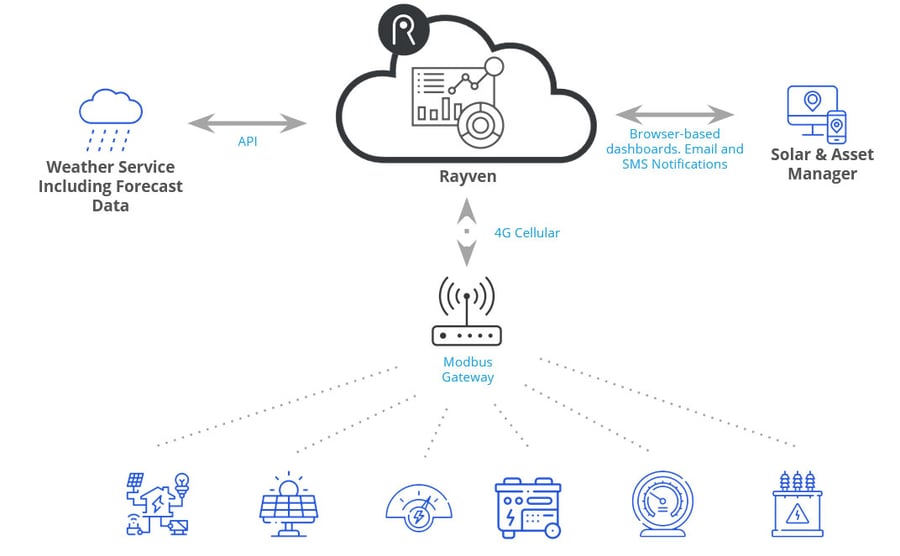
Before go-live, we tested four critical aspects of the Solar Monitoring solution:
Security.
The Rayven Platform is built with security as a top priority. Rayven’s proprietary security architecture ensures data is secure at all points of the environment.
The Solar Monitoring solution includes data encryption in transit. Data is encrypted from device to cloud (device-dependent), Devices are authenticated using device keys (device-dependent) and 256-bit SSL encryption is used between end-user devices
Connectivity.
A Modbus energy meter, which also has 4G gateway capability built-in, proved to be the best solution. It requires a one-time small investment and then no costs to maintain the connection, other than the monthly 4G data sim fee. The combination of a secure and encrypted transmission path together with a dedicated, direct connection meant a fast, secure and non-invasive connection without needing to involve IT.
Data Integrity.
Our Solar Monitoring solution is only as good and reliable as the data you collect, so making sure that you’re getting continuous, reliable connectivity is critical in providing a tool that always has up-to-date data that you can rely on it to make critical business decisions in real-time. To ensure this, it was critical for us to test that the data we were seeing from the solar panels matched 100% to what we were seeing in the dashboards and to build in ‘data back fill in sequence’ capability, so that in the event that communication ever went down, the missing data could be back-filled from the edge.
Industrial Data Science.
The objective of exploratory data analysis was to observe trends in the data and compare them to what was happening in the field, which included:
- Forecasting energy production vs. consumption
- Energy production anomaly detection
- Energy guarantee percentage.
What’s next?
We are already working to further improve the Solar Monitoring solution's capability to identify minor issues or anomalies in output, so that corrections can be made before they become serious problems requiring an unplanned interruption in energy production.













